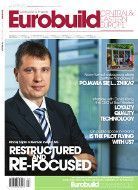Pop-up stores are best understood as temporary shops. The concept has come to us from America, but the idea originates in Japanese consumer culture, which is mostly centred around an original and unique approach. Thus the formula of the ‘disappearing’ shop with a limited offer of products – not only in terms of the selection of goods, but mainly due to the limited period that the store remains open for – and we are not talking about its opening times, but the short duration that it operates in a given location. The trick is to exploit the rule of limited availability, which is based on a certain understanding knowledge of human nature – we want the things most that are least available. A limited edition? The last item? I must have it! The mechanism can also be seen in play in hypermarkets just before a bank holiday. And this is how the idea of the pop-up store was born.
Something unique
In Poland the concept has been present on the market for two or thre






























































